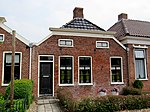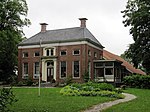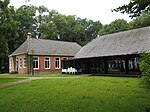Vestingmuseum Oudeschans
Fortifications in the NetherlandsHistory museums in the NetherlandsLocal museums in the NetherlandsMilitary and war museums in the NetherlandsMuseums in Groningen (province) ... and 2 more
Pages with Dutch IPAWesterwolde (municipality)

Vestingmuseum Oudeschans (Dutch pronunciation: [ˈvɛstɪŋmyˌzeːjʏm ˈʌudəˌsxɑns]; English: Oudeschans Fortification Museum) is a local museum in the village of Oudeschans in the Netherlands. The museum shows the history of the 16th-century fortification of Oudeschans and has a collection of archaeological findings. The museum opened on 12 September 1987. The building was renovated in 2009. The museum lost its structural municipal subsidy in 2010. The museum staff consists of volunteers only. With 1,195 visitors in 2015, it is one of the lesser-visited museums in Groningen.
Excerpt from the Wikipedia article Vestingmuseum Oudeschans (License: CC BY-SA 3.0, Authors, Images).Vestingmuseum Oudeschans
Voorstraat, Westerwolde
Geographical coordinates (GPS) Address Website Nearby Places Show on map
Geographical coordinates (GPS)
| Latitude | Longitude |
|---|---|
| N 53.1385 ° | E 7.1407 ° |
Address
Vestingmuseum
Voorstraat
9696 XM Westerwolde
Groningen, Netherlands
Open on Google Maps









